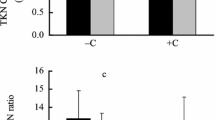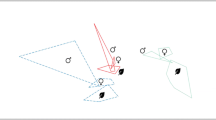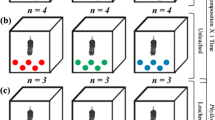Abstract
The study focused on litter processing efficiency of the sesarmid crab, Parasesarma plicatum under experimental conditions and its possible role in carbon structuring in the mangrove habitats. The feeding experiment of crab with different stages of leaves of diverse mangrove species revealed that senescent brown leaves were preferred the most, due to their lesser tannin content. The leaf consumption differed significantly with leaf state as well as mangrove species and highest was for Avicennia officinalis brown leaves. The ingestion-egestion assay of P. plicatum revealed that it assimilated an average of 65.75 ± 10.30% of mangrove litter. The experimental study also revealed that rather than already reported C/N ratio, the inhibiting factors such as tannin and lignin like substances control the palatability of leaves by the crab species. The analysis of carbon and nitrogen variants in the experimental water indicated that handling of leaves by the crab helps in leaching of nutrients to the substratum. Therefore, the findings of litter processing efficiency of this sesarmid crab from the present study highlights its significance in structuring the carbon in natural mangrove habitat.






Similar content being viewed by others
Data availability
Enquiries about data availability should be directed to the authors.
References
Alongi, D. M., 2014. Carbon Cycling and Storage in Mangrove Forests. Annual Review of Marine Science 6: 195–219. https://doi.org/10.1146/annurev-marine-010213-135020.
Andreetta, A., M. Fusi, I. Cameldi, F. Cimò, S. Carnicelli & S. Cannicci, 2014. Mangrove carbon sink. Do burrowing crabs contribute to sediment carbon storage? Evidence from a Kenyan mangrove system. Journal of Sea Research 85: 524–533. https://doi.org/10.1016/j.seares.2013.08.010.
AOAC, 2000. Official methods of analysis. Association of Official Analytical Chemists International. Maryland, USA
APHA, 2005. American Public Health Association. Standard methods for the examination of analysis of water and waste water, 21st edition.
Bui, T. H. H. B. & S. Y. Lee, 2014. Does ‘you are what you eat’ apply to mangrove Grapsid crabs? PLoS ONE 9: 1–12.
Camilleri, J. C., 1989. Leaf litter processing by invertebrates in a mangrove forest in Queensland. Marine Biology 114: 139–145.
Cannicci, S., D. W. Burrows, S. Fratini, T. J. Smith III., J. Offenberg & F. Dahdouh-Guebas, 2008. Faunal impact on vegetation structure and ecosystem function in mangrove forests: A review. Aquatic Botany 89: 186–200. https://doi.org/10.1016/j.aquabot.2008.01.009.
Chen, G. C. & Y. Ye, 2008. Leaf consumption by Sesarma plicata in a mangrove forest at Jiulongjiang Estuary, China. Marine Biology 154: 997–1007.
Chen, G.C., C. Lu, R. Li, B. Chen, Q. Hu & Y. Ye, 2016. Effects of foraging leaf litter of Aegiceras corniculatum (Ericales, Myrsinaceae) by Parasesarma plicatum (Brachyura, Sesarmidae) crabs on properties of mangrove sediment: a laboratory experiment. Hydrobiologia 763: 125–133. https://doi.org/10.1007/s10750-015-2367-1
Chhapgar, B. F., 1957. Marine crabs of Bombay state. Contribution No. 1 of the Taraporevala, Marine Biological Station. 1–129.
Christensen, B., 1978. Biomass and primary production of Rhizophora apiculata in a mangrove forest in southern Thailand. Aquatic Botany 4: 43–52.
Nellemann, C., E. Corcoran & C. M. Duarte, et al. 2009. Blue carbon. A rapid response assessment. GRID-Arendal: United Nations Environment Programme. ISBN: 978–82–7701–060–1.
Dahdouh-Guebas, F., Giuggioli, A. Olouch, M. Vannini & S. Cannicci, 1999. Feeding habits of non-ocypodid crabs from two-mangrove forest in Kenya. Bulletin of 52 Islam et al. /The Agriculturists 6: 43–53 (2008) Marine Science 64: 291–297.
Donato, D.C., J. B. Kauffman, S., Kurnianto, M. Stidham & D. Murdiyarso, 2011. Mangroves among the most carbon-rich forests in the tropics. Nature Geoscience 4: 293–297. https://doi.org/10.1038/NGEO1123.
Emmerson, W. D. & L. E. Mc Gwynne, 1992. Feeding and assimilation of mangrove leaves by the crab Sesarma meinarti de Man in relation to leaf litter production in Magzana, a warm -temperature in southern African mangrove swamp. Journal of Experimental Marine Biology and Ecology 157: 41–53.
Erickson, A. A., M. Saltis, S. S. Bell & C. J. Dawes, 2003. Herbivory feeding preferences as measured by leaf damage and stomatal ingestion: a mangrove crab example. Journal of Experimental Marine Biology and Ecology 289: 123–138.
Erickson, A. A., S. S. Bell & C. J. Dawes, 2004. Does mangrove leaf chemistry help explain crab herbivory patterns? Biotropica 36: 333–343.
Feller, I. C., 1995. Effects of nutrient enrichment on growth and herbivory of dwarf red mangrove (Rhizophora mangle). Ecological Monograph 65: 477–505.
Harada, Y. & S. Y. Lee, 2016. Foraging behavior of the mangrove sesarmid crab Neosarmatium trispinosum enhances food intake and nutrient retention in a low-quality food environment. Estuarine Coastal Shelf Science 174: 41–48. https://doi.org/10.1016/j.ecss.2016.03.017.
Kathiresan, K. & A. V. Ravi, 1990. Seasonal Changes in Tannin Content of Mangrove leaves. Indian Forester 116(5): 390–392.
Kristensen, E., S. Bouillon, T. Dittmar & C. Marchand, 2008. Organic carbon dynamics in mangrove ecosystems: A review. Aquatic Botany 89: 201–219.
Kristensen, D. K., E. Kristensen & P. Mangion, 2010. Food partitioning of leaf-eating mangrove crabs (Sesarminae): Experimental and stable isotope (13C and 15N) evidence. Estuarine Coastal and Shelf Science 87: 583–590.
Kwok, W. P. W. & S. Y. Lee, 1995. The growth performances of two mangrove crabs, Chiromanthes bidens and Parasesarma plicata under different leaf litter diets. Hydrobiologia 295: 141–148. https://doi.org/10.1007/BF00029121.
Lee, S. Y., 1998. Ecological role of grapsid crabs in mangrove ecosystems: a review. Marine Freshwater Research 49: 335. https://doi.org/10.1071/MF97179.
Lee, S. Y. & W. P. Kwok, 2002. The importance of mangrove species association to the population biology of the sesarmid crabs Parasesarma affinis and Perisesarma bidens. Wetlands Ecology and Management 10: 215–226. https://doi.org/10.1023/A:1020175729972.
Lee, S. Y., J. H. Primavera, F. Dahdouh-Guebas, K. L. McKee, J. O. Bosire, S. Cannicci, K. Diele, F. Fromard, N. Koedam, C. Marchand, I. A. Mendelssohn, N. Mukherjee & S. Record, 2014. Ecological role and services of tropical mangrove ecosystems: a reassessment. Global Ecology and Biogeography 23: 726–743. https://doi.org/10.1111/geb.12155.
Mazumder, D. & N. Saintilan, 2010. Mangrove Leaves are Not an Important Source of Dietary Carbon and Nitrogen for Crabs in Temperate Australian Mangroves. Wetlands 30: 375–380.
McKee, K. L. & I. C. Feller, 1995. Interactions among nutrients, chemical and structural defense, and herbivory in mangroves at Rookery Bay, Florida. Final Report. Office of Ocean and Coastal Resource Management, National Oceanic and Atmospheric Administration, Silver Spring, Maryland.
Micheli, F., 1993. Feeding ecology of mangrove crabs in North Eastern Australia: mangrove litter consumption by Sesarma messa and Sesarma smithii. Journal of Experimental Marine Biology and Ecology 171: 165–186. https://doi.org/10.1016/0022-0981(93)90002-6.
Nair, S. M., A. N. Balchand & P. N. K. Nambisan, 1989. On the determination and distribution of hydroxylated aromatic compounds in estuarine waters. Toxicology and Environmental Chemistry 23: 203–213.
Ng, P. K., D. Guinot, & P. J. Davie, 2008. Systema Brachyurorum: Part I. An annotated checklist of extant brachyuran crabs of the world. The Raffles Bulletin of Zoology 17 (1): 1–286.
Ng, P. K. L., Varghese Rani & S. Bijoy Nandan, 2017. A new species of Pseudosesarma Serène and Soh, 1970 (Crustacea: Brachyura: Sesarmidae) from Cochin in southwestern India. Zootaxa 4311(2): 263–270.
Nordhaus, I. & M. Wolff, 2007. Feeding ecology of the mangrove crab Ucides cordatus (Ocy-podidae): food choice, food quality and assimilation efficiency. Marine Biology 151: 1665–1681.
Nordhaus, I., T. Salewski & T. C. Jennerjahn, 2011. Food preferences of mangrove crabs related to leaf nitrogen compounds in the Segara Anakan Lagoon, Java, Indonesia. Journal of Sea Research 65: 414–426.
Olabarria, C., A. Underwood & M. Chapman, 2002. Appropriate experimental design to evaluate preferences for microhabitat: an example of preferences by species of microgastropods. Oecologia 132(2): 159–166.
Pati, S. K., V. Rani, P. S. Sujila & S. Bijoy Nandan, 2019. First confirmed record of the sesarmid crab, Parasesarma bengalense (Davie, 2003) (Decapoda: Brachyura) in Indian waters. Nauplius 27: e-2019012. https://doi.org/10.1590/2358-2936e2019012.
Rani, V., S. Sreelekshmi, C. M. Preethy & S. Bijoy Nandan, 2016. Phenology and litterfall dynamics structuring Ecosystem productivity in a tropical mangrove stand on South West coast of India. Regional Studies in Marine Science 8: 400–407. https://doi.org/10.1016/j.rsma.2016.02.008
Rani, V., S. Sreelekshmi, C.V. Asha & S. Bijoy Nandan, 2018. Forest Structure and Community Composition of Cochin Mangroves, South-West Coast of India. Proceedings of National academy of Science, Section B: Biological Science. India 88(1): 111–119. https://doi.org/10.1007/s40011-016-0738-7.
Rani, V., S. Bijoy Nandan & P.T. Schwing, 2021. Carbon source characterisation and historical carbon burial in three mangrove ecosystems on the South West coast of India. Catena 197: 104980. https://doi.org/10.1016/j.catena.2020.104980
Ravichandran, S. & T. Kannupandi, 2004. Biochemical changes in decomposing leaves and crabs of Pichavaram mangroves. Biochemical and Cellular Archives 4(2): 79–86.
Ravichandran, S., T. Kannupandi, & K. Kathiresan, 2006. Mangrove leaf litter processing by sesarmid crabs, Cry. Journal of Science (Bio.Sci) 35(2): 107–114.
Ravichandran, S., A. Anthonisamy, T. Kannupandi & T. Balasubramanian, 2007. Leaf choice of Herbivorous mangrove crabs. Research Journal of Environmental Science 1: 26–30.
Robertson, A. I., 1986. Leaf-burying crabs: their influence on energy flow and export from mixed mangrove forests (Rhizophora spp.) in northeastern Australia. Journal of Experimental Marine Biology and Ecology 102: 237–248.
Russell-Hunter, W. D., 1970. Aquatic Productivity: An Introduction to Some Basic Aspects of Biological Oceanography and Limnology, MacMillan, New York:, 306.
Schories, D., A. Barletta-Bergan, M. Barletta, U. Krumme, U. Mehlig & V. Rademaker, 2003. The keystone role of leaf-removing crabs in mangrove forests of North Brazil. Wetland Ecology and Management 11: 243–255.
Shanij, K., V. P. Praveen, S. Suresh, M. Mathew & Oommen & T. S. Nayar, 2016. Leaf litter translocation and consumption in mangrove ecosystems: the key role played by the sesarmid crab Neosarmatium malabaricum. Current Science 110(10): 1969–1976.
Sheaves, M. & B. Molony, 2000. Short-circuit in the mangrove food chain. Marine Ecology Progress Series 199: 97–109.
Skov, M. W. & R. G. Hartnoll, 2002. Paradoxical selective feeding on a low-nutrient diet: why do mangrove crabs eat leaves? Oecologia 131: 1–7.
Slim, F. J., M. A. Hemminga, C. Ochieng, N.T. Cocheret. Jannick & de la Morinie`re & E.G. van der Velde, 1997. Leaf litter removal by the snail Terebralia palustris (Linneaus) and sesarmid crabs in an East African mangrove forest (Gazi Bay, Kenia). Journal of Experimental Marine Biology and Ecology 215: 35–48.
Smith, T. J., K. G. Boto, S. D. Frusher & R. L. Giddins, 1991. Keystone species and mangrove forest dynamics: the influence of burrowing by crabs on soil nutrient status and forest productivity. Estuarine Coastal and Shelf Science 33: 419–432.
Tan, C. G. S. & P. K. L. Ng, 1994. An Annoted checklist of mangrove brachyuran crabs from Malaysia and Singapore. Hydrobiologica 285: 75–84.
Thongtham, N. & E. Kristensen, 2005. Carbon and nitrogen balance of leaf-eating sesarmid crabs (Neoepisesarma versicolor) offered different food sources. Estuarine Coastal and Shelf Science 65: 213–222.
Tongununui,P, Y. Kuriya, M. Murata, H. Sawada, M. Araki, M. Nomura, K. Morioka, T. Ichie, K. Ikejima & K. Adachi, 2021. Mangrove crab intestine and habitat sediment microbiomes cooperatively work on carbon and nitrogen cycling. PLoS One 16(12): e0261654. https://doi.org/10.1371/journal.pone.0261654.
Underwood, A. J., M. G. Chapman & T. P. Crowe, 2004. Identifying and understanding ecological preferences for habitat or prey. Journal of Experimental Marine Biology and Ecology 300(1–2): 161–187.
Werry, J. & S. Y. Lee, 2005. Grapsid crabs mediate link between mangrove litter production and estuarine planktonic food chains. Marine Ecology Progress Series 293: 165–176.
Williams, W. T., J. S. Bunt & N. C. Duke, 1981. Mangrove litter fall in NE Australia II. Periodicity. Australian Journal of Botany 29: 555–563.
Acknowledgements
The first author is thankful to DST-INSPIRE, Govt. of India with grant number (IF110502) which financially supported the present research work. The authors are thankful to Dr. Ng. K. Peter, National University of Singapore for his support in crab identification.
Funding
The Research was carried out with the funding from DST-INSPIRE, Govt. of India with grant number (IF110502).
Author information
Authors and Affiliations
Contributions
VR: contributed to the conception and design of the work, acquisition, analysis, interpretation of data and manuscript drafting. BN: contributed in conception and edited the manuscript. SC: helped in experimental part and field collection of crabs and leaves. KSS: helped in molecular analysis of crabs and also assisted in experimental analysis. CMPp: helped in editing the manuscript.
Corresponding author
Ethics declarations
Conflict of interest
The authors declare no competing interests.
Ethical approval
Not applicable.
Consent to participate
Not applicable.
Additional information
Handling editor: Emily M. Dangremond
Publisher's Note
Springer Nature remains neutral with regard to jurisdictional claims in published maps and institutional affiliations.
Supplementary Information
Below is the link to the electronic supplementary material.
Rights and permissions
Springer Nature or its licensor (e.g. a society or other partner) holds exclusive rights to this article under a publishing agreement with the author(s) or other rightsholder(s); author self-archiving of the accepted manuscript version of this article is solely governed by the terms of such publishing agreement and applicable law.
About this article
Cite this article
Rani, V., Sreelakshmi, C., Nandan, S.B. et al. Feeding ecology of Parasesarma plicatum and its relation to carbon structuring in mangrove ecosystem. Hydrobiologia 850, 911–927 (2023). https://doi.org/10.1007/s10750-022-05133-y
Received:
Revised:
Accepted:
Published:
Issue Date:
DOI: https://doi.org/10.1007/s10750-022-05133-y




